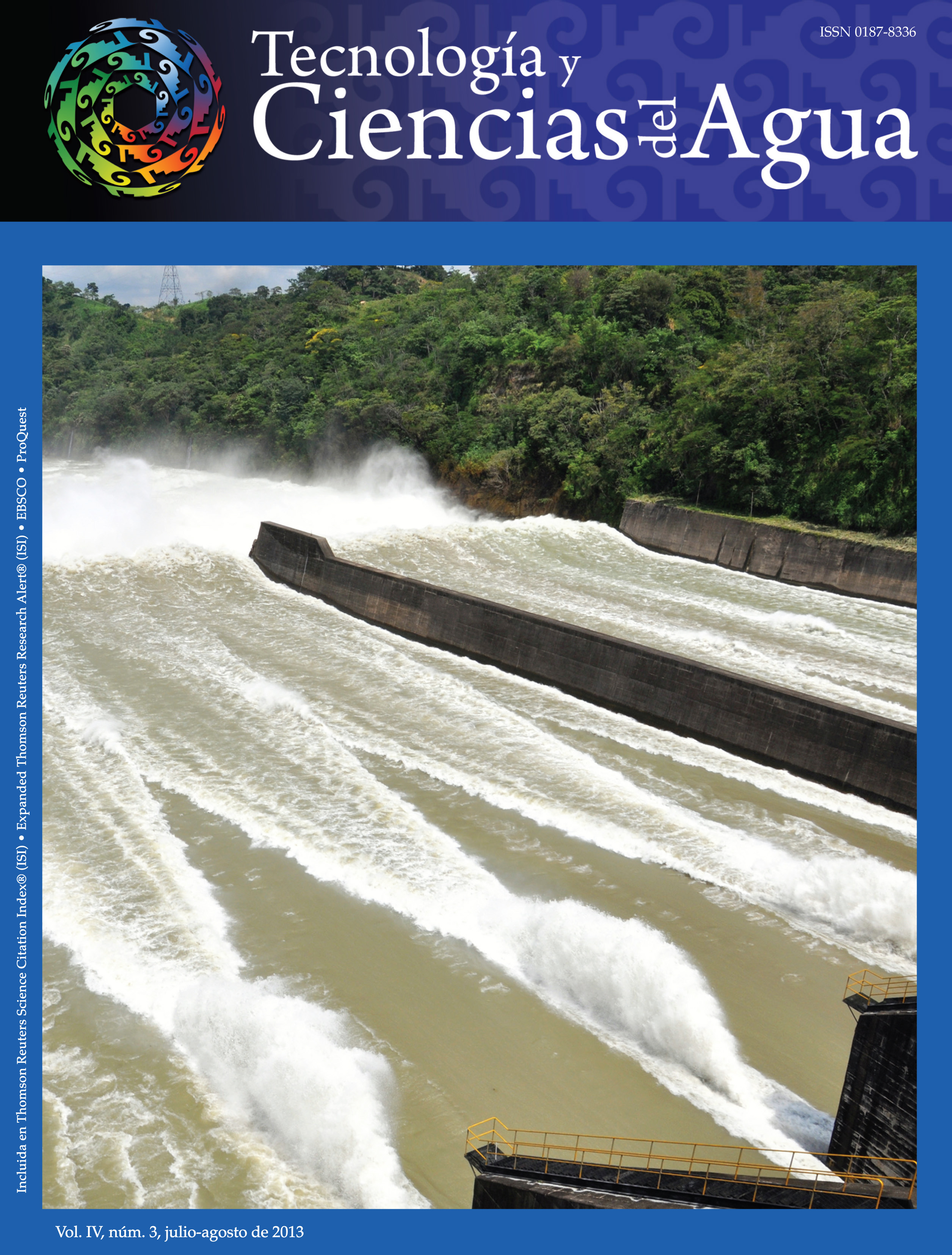Assessment of risk due to extreme rainfall for the Xochimilco aquifer.
Keywords:
aquifer, water quality, climate change, extreme rainfall, time seriesAbstract
This study estimated the risk of deterioration in the water quality of the Xochimilco aquifer, Mexico City. First, the vulnerability of the aquifer was evaluated using the Groundwater hydraulic confinement - Overlaying strata- Depth to groundwater table (GOD) method, considering a response time of less than one year. Subsequently, the correlation between maximum monthly precipitation and water quality indicators was analyzed, for conductivity and total dissolved solids (TDS) for the period 1980-2007. Then, using the PAR(2) time series model, monthly precipitation anomalies were projected using the Regionalized Climate Change Scenarios Information System (SIECCRe, Spanish acronym), based on theA2 scenario for the periods 2011-2030 and 2031-2050. These projections were used with the Gumbel mixed model to estimate conductivity and TDS values for precipitation. The analysis showed that vulnerability is high in the eastern region and low in the west, and that the aquifer responds in roughly four months. In addition, samples with elevated conductivity values were found to have an increased probability of containing fecal coliforms. Finally, for the projections for 2011-2030 and 2031-2050, the probabilities are expected to remain constant for the first period, and increase to 28% in the east and 21% in the west for the second period.
Downloads
Published
2013-08-03
How to Cite
Navarrete, S., Jiménez, B., Navarro, I., & Domínguez, R. (2013). Assessment of risk due to extreme rainfall for the Xochimilco aquifer. Tecnología Y Ciencias Del Agua, 4(3), 103–123. Retrieved from https://revistatyca.org.mx/index.php/tyca/article/view/368
Issue
Section
Articles
License
By Instituto Mexicano de Tecnología del Agua is distributed under a Creative Commons Attribution-NonCommercial-ShareAlike 4.0 International License. Based on a work at https://www.revistatyca.org.mx/. Permissions beyond what is covered by this license can be found in Editorial Policy.









